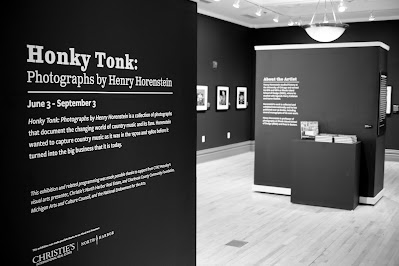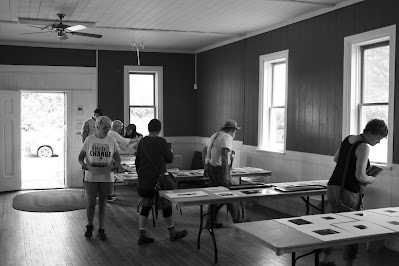I have returned from my latest road trip, that accounted for 2,241 miles over 9 days - which had several objectives. Primarily, it was a trip to Photostock 2022 in Cross Village, MI, but it also included a US 23 journey, a visit with my sister and her husband in Canton, Ohio, and photographing small post offices along the way, and almost all of it was photographed using several Pentax Spotmatics and a Pentax 6X7. My new to me Canon EOS M5 camera also got used a bit, as well as the Horizon 202 and Ansco Pix Panorama. However, it was the lovely black Pentax Spotmatic SP shown here that was used the most. I picked it up at Ball Photo in Asheville a few weeks before my trip, which started on June 20 and ended June 28.
The lens that I used the most is the Super Takumar 35mm f/3.5, as its coverage is perfect for travel photography, and it's also a relatively small lens, especially compared with my 35mm f/2 monster! The Spotmatic SPs and Spotmatic F (which was almost always paired with the 28mm f/3.5) accounted for about 15 rolls of film during this trip, mostly in black and white. The Spotmatic F always had a roll of color C-41 film.
 |
| Film waiting to be developed! |
My route US-23 is a long-term project, and all that remains is to do the route S of Weaverville. There's a lot that I have photographed along it in previous years in Michigan, but it was never really a "project" at the time. The northern terminus of US-23 is at Mackinaw City, MI where it ends at I-75. I only did part of US-23 going N, because I had to cut over to Canton, OH to visit my sister. That gave me the opportunity to check ahead of time for routes that would take through small towns with post offices.
 |
| Hartville, OH |
In Ohio, it was route 224 that took me from Canton OH area to I-75 N to MI and US-23. On the return trip it was US-23S all the way from Ann Arbor, MI to Weaverville, NC. Going N on US-23 in Michigan, I started in Standish, where US-23N splits off from I-75. The rest of that route follows the coastline up to Mackinaw City.
 |
| The northern terminus of US-23N at I-75 in Mackinaw City, MI |
Photostock was held in Cross Village, MI this year, and Bill Schwab, the organizer, did a wonderful job putting together a meeting and event that brought photographers together for a couple of days. It was fun sharing our work, seeing old friends and making new ones in a very laid-back atmosphere along the Lake Michigan coastline. It was a long trip for me, and I'm glad that I went, as it became part of the Takumar Trek.
I have yet to process my film from this trip, but I will get started on it shortly. I'll be sharing some of the images here, on Instagram, and of course, on my Flickr account (all mfophotos).
 |
| Waiting for the train to do its crossing at Standish. |
 |
| Paul Bunyan and Babe, in Ossineke, MI |
I had some time to kill before Photostock, so I stayed two nights in Mackinaw City, and on June 23, I took a short trip into the Upper Peninsula to revisit some spots along US-2.
 |
| Gould City, MI |
 |
| It's pretty tough to beat a Lake Michigan sunset |
























